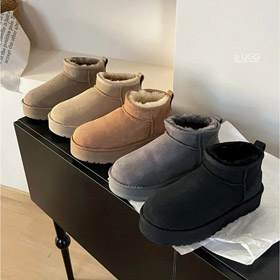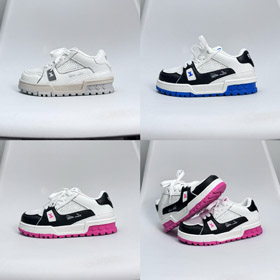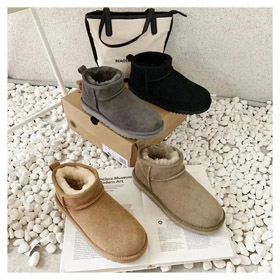Gucci: A Timeless Emblem of Italian Luxury and Fashion Innovation
2025-04-14
Gucci: A Timeless Emblem of Italian Luxury and Fashion Innovation
Gucci, an Italian luxury brand, has long been a paragon of elegance, craftsmanship, and innovation in the world of fashion. Since its inception in 1921, the brand has traversed through various eras, adapting to changing trends while maintaining its core identity, which is deeply rooted in Italian heritage. From its humble beginnings as a small leather goods shop in Florence to becoming a global fashion powerhouse, Gucci's journey is a fascinating tale of perseverance, creativity, and strategic reinvention.
The Founding of Gucci: A Humble Beginning in Florence
Guccio Gucci founded the brand in 1921 in Florence, Italy. Guccio, who had previously worked as a hotel porter in London, was inspired by the luxury luggage and accessories he saw wealthy travelers carrying. He returned to Italy with a vision to create high - quality leather goods that combined functionality with style. The first Gucci store on Via della Vigna Nuova in Florence initially sold leather bags, suitcases, and horse - riding accessories. The use of fine Italian leather, combined with meticulous craftsmanship, quickly made Gucci products stand out in the market.
The Growth and Expansion of the Brand
In the 1930s, Gucci introduced its first bamboo - handled handbag. The bamboo handle, which was bent using steam without the use of nails or glue, became an instant classic. This innovation not only added a unique aesthetic touch but also demonstrated Gucci's commitment to quality and craftsmanship. In the 1950s, Gucci expanded its product range to include shoes, and the iconic "loafer" with the horsebit detail was introduced. The horsebit, a symbol of Gucci's equestrian heritage, became one of the brand's most recognizable design elements.
The 1960s and 1970s were a period of significant growth for Gucci. The brand's popularity spread globally, especially in the United States. The Gucci logo, with its interlocking "GG" pattern, was introduced in the 1960s and became a status symbol. The logo - printed canvas was used on a variety of products, from handbags to clothing, making Gucci products easily recognizable and highly desirable. Celebrities such as Audrey Hepburn, Jackie Kennedy, and Elizabeth Taylor were often seen wearing Gucci, further boosting the brand's image as a symbol of luxury and style.
The Creative Revival: Tom Ford's Influence
In the 1990s, Gucci faced a crisis, with the brand being over - exposed and losing its luster. In 1994, Tom Ford was appointed as the creative director, and he spearheaded a remarkable turnaround. Ford brought a modern, sexy, and edgy aesthetic to the brand. He reintroduced the use of bold colors, animal prints, and form - fitting designs. His collections featured see - through blouses, low - rise pants, and body - hugging dresses, which were a departure from the more traditional Gucci styles. Ford also expanded Gucci's product range to include ready - to - wear, accessories, and fragrances, and his designs were highly successful, both critically and commercially.
Signature Designs and Iconic Elements
The Interlocking "GG" Logo
The interlocking "GG" logo, which stands for Guccio Gucci, is one of the most recognizable symbols in the fashion industry. Introduced in the 1960s, the logo has been used on a wide range of products, from handbags and wallets to clothing and shoes. The logo - printed canvas, often in beige and brown, has become synonymous with Gucci's luxury aesthetic.
The Bamboo Handle
The bamboo - handled handbag, first introduced in the 1930s, remains an iconic Gucci design. The use of bamboo, a sustainable and versatile material, gives the bags a unique look. The bamboo handle is not only a design element but also a testament to Gucci's craftsmanship, as the bending process requires great skill.
The Horsebit Detail
The horsebit, a metal ornament inspired by equestrian gear, is another signature element of Gucci. It was first used on the brand's loafers in the 1950s and has since been incorporated into various products, including handbags, belts, and jewelry. The horsebit adds a touch of elegance and a nod to Gucci's heritage.
Gucci in the 21st Century: Continued Innovation under Alessandro Michele
Since 2015, Alessandro Michele has served as the creative director of Gucci, bringing a new wave of creativity to the brand. Michele's designs are characterized by a maximalist aesthetic, combining vintage - inspired elements, bold prints, and eclectic combinations. His collections often feature mismatched patterns, bright colors, and a sense of playfulness. Michele has also revived many classic Gucci designs, such as the Dionysus bag, which features a tiger - head clasp. Under his leadership, Gucci has become a favorite among fashion enthusiasts and celebrities alike, and the brand has seen a significant increase in sales and brand awareness.
Influence on the Fashion Industry
Gucci's influence on the fashion industry is profound. The brand has set trends in terms of design, material use, and marketing. Its ability to blend traditional Italian craftsmanship with modern design concepts has inspired many other luxury brands. Gucci's marketing campaigns, which often feature diverse models and creative concepts, have also influenced the way luxury brands approach advertising. The brand's collaborations with artists, musicians, and other cultural figures have further expanded its reach and relevance in popular culture.
In conclusion, Gucci's journey from a small leather goods shop to a global fashion empire is a story of innovation, adaptation, and timeless style. The brand's iconic designs, commitment to quality, and ability to reinvent itself have made it a symbol of luxury and fashion excellence. For more insights into the world of luxury fashion and lifestyle, visit KAKOBUY.



















